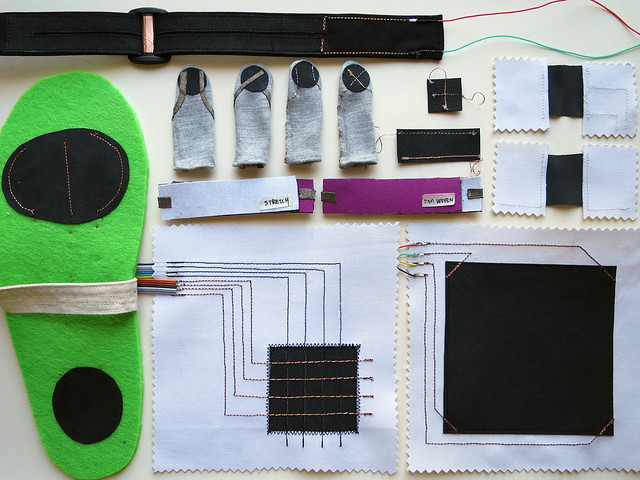I've just received a 30cmx30cm patch of eeontex.
I cut a 1cm square piece of this one for a quick experiment of volume resistivity pressure sensing.
I used 4 mm copper tape strips : one horizontal at the bottom side, the other vertical on the top side.
The result is a resistance varying from 8k ohms to 200 ohms under the pressure of my index.
With a 20*10mm rectangle crossed by a 15mm and a 5mm copper tape (the size of the sensor i want) I have a usable pressure range from 500 Ohms to 20 Ohms.
That's not as good as a genuine FSR, but much better than I expected.
I also tried surface resistivity sensing with to parallel strips on the same side of the fabric (1cm wide 2cm long).
It needed a higher pressure to get resistance variations (from 40kOhms to 5kOhms)... not good for finger sensors, but maybe good for a pedal sensor.
Compared to FSRs, this fabric need some experimentation but it cost a fraction of the price of FSRs.





